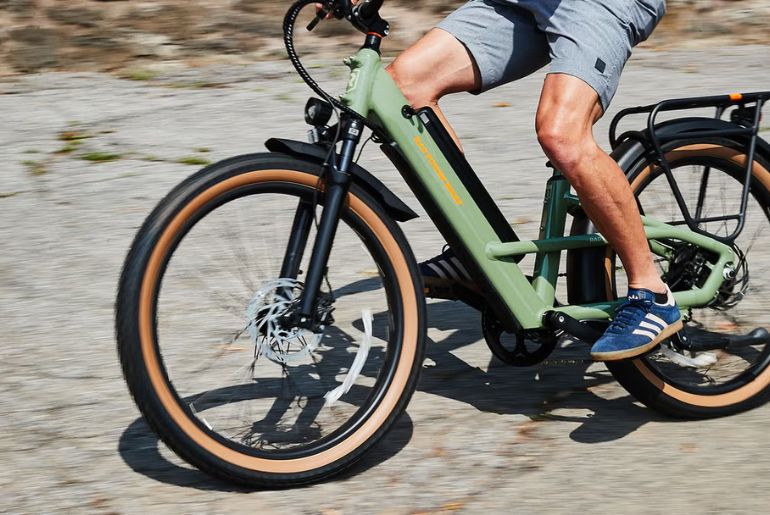Powered by the state-of-the-art TQ HPR40 mid-drive system, Ridley’s new E-ASTR adds lightweight electric assistance to its already excellent ASTR gravel platform. The frame’s silhouette is almost the same as the non-electric version of the same bike thanks to this technology, which adds only 1.17 kg (2.6 lb) to the crank and a covert 1.46 kg (3.2 lb) and 290 Wh battery concealed inside the downtube, unlike bulkier e-bike installations. Without yelling “electric bike“, riders who pay close attention may notice only a handlebar-end LED indication, internal cable routing, and a slightly wider downtube.
The E-ASTR improves riding sensation at the expense of the small motor’s raw power. According to reports, the HPR40 can provide up to 200 W of assistance and a moderate 40 Nm of torque, which is sufficient to provide a tailwind on gravel or smooth out climbs without overwhelming the rider. With support cut off at 25 km/h (15.5 mph), pedal responsiveness remains natural and fluid. The bike appears to provide precise handling and comfort appropriate for the demands of contemporary gravel roads when paired with the ASTR’s race-inspired shape.
Three specification levels are currently available for the E-ASTR from Ridley: a mid-range SRAM Rival XPLR AXS 1×13 version for €8,199 (roughly US $9,700), a top-tier Shimano GRX 2×12 Di2 model for €8,899 (roughly US $10,500), and a value SRAM Apex XPLR AXS build for €7,199 (roughly US $8,500). Each has carbon wheels, industry-standard gravel brakes and tyres, high-end drivetrains, and integrated cockpit options. The E-ASTR is establishing itself as a high-performance gravel machine that keeps loyal to its heritage by providing aid when required without overpowering the rider, thanks to its race-ready frame and lightweight, stealthy e-assistance.
Electric assistance is becoming nearly undetectable in appearance and feel thanks to ultra-lightweight motors like the TQHPR40, which are subtly changing the e-bike market. New types of performance-focused e-bikes that maintain the riding characteristics of analogue bikes while providing just enough support when it matters are becoming possible as systems are smaller and more smoothly integrated into conventional bike frames.
These simple systems are demonstrating that you don’t need a large battery or a huge motor to reap the benefits of going electric, which is especially important for older riders who wish to continue riding despite the effects of ageing on their joints and muscles. These riders value a natural pedalling experience but still want a little assistance on climbs or longer days. As a result, there is a surge of high-performance, stealthy e-bikes that focus more on improving the experience than on replacing effort.

